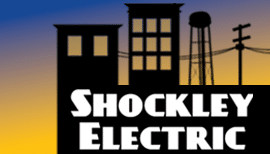So you need to grab some lightbulbs for your house at the local hardware store. No problem, right? Not so fast. Like razors, toothpaste, and even loaves of bread, these days you’ll find a dizzying array of choices when it comes to lightbulbs. LED or incandescent? 5000 Kelvin or 2500 Kelvin? 50 watts or 100 watts? Soft white or warm white? Globe or candelabra? So many decisions!
Good news! You can avoid overwhelm and save time when you understand the options available and factors to consider before you head to the store. We’ll examine a few of the most common bulb types here to get you started.
Prefer to leave it to the professionals? No problem! Reach out to receive the guidance you need.
Bulb Types: Cost and Lifespan
Today, long-lasting, energy-efficient LED bulbs are likely the best choice for most rooms in your home, but let’s take a quick look at the other options you may encounter at the store.
- Incandescent bulbs are the lightbulbs you might be most familiar with seeing. They are affordable and come in a variety of sizes, but they generate a good bit of heat and may only last 750 hours. You’ll replace these bulbs often.
- Compact Fluorescent (CFL) bulbs, often appearing in a unique spiral shape, last significantly longer than incandescents, but not nearly as long as LEDs. They are cheaper than LEDs, however, which makes them appealing to many.
- Light-Emitting Diode (LED) bulbs are today’s most popular bulb choice—and for good reason. Though they cost a bit more to purchase, LEDs last up to 25,000 hours and require less energy than incandescent and CFL bulbs to produce light which means you won’t need to replace them often and they won’t generate huge electricity bills.
With a few exceptions, like outdoor lighting perhaps, LEDs are likely to meet your lighting needs. But you still have a few decisions to make. Specifically, upon examining a few LED bulbs you’ll notice three numbers: watts, lumens, and Kelvin. Let’s take a closer look.
Energy Usage: Watts
Watts measure the amount of energy a bulb emits. As we mentioned earlier, LED bulbs use less energy than CFL and incandescent bulbs to emit the same amount of light. It’s this quality that makes them energy efficient. Though perhaps not important to the look and feel you want to achieve in your home, it’s definitely important for your wallet.
Brightness: Lumens
Lumens measure brightness. And different rooms need different levels of brightness. You may want to create a super energizing office (more brightness = more lumens) and a more serene formal dining room (less brightness = fewer lumens).
The number of total lumens it takes to achieve the light you want also depends on the size of your room. For example, say you want to achieve similar levels of brightness in a large child’s playroom and a small laundry room.
A large playroom will require more lighting sources (lamps, overhead lighting, task lighting)—and therefore more lumens—to reach the same level of brightness as a small laundry room that may only need one overhead light.
Light Appearance: Kelvin
Here’s where we really set the mood. We measure light temperature or color using Kelvin. Like brightness, different rooms in your home feel may better with different light temperatures.
Typically, you will want to use warm, calming light in the 2700 Kelvin range in rooms like living rooms and bedrooms. In contrast, you may want cooler, more blue-leaning light in the 5000-Kelvin range for an office. Most manufacturers make it easy to select the Kelvin level you need based on the room you are looking to light. In fact, many label their products with room names to make it super simple.
Other Tips and Factors to Consider
LED bulbs come in a variety of shapes and sizes. If possible, it’s a good idea to bring the current bulb you are using or the paperwork that accompanies your fixture with you to the store. Items like fans require special bulbs, so make sure to check packaging carefully.
If you are sensitive to light, you might want to consider bulbs with dimming capabilities. Just make sure your fixture and switch allow for this custom functionality.
Know when to ask for help
While there’s no right or wrong when it comes to the lighting you choose, because lighting makes such a huge difference in the look and feel of each room in your home, it’s important to do your homework or ask for help.
Reach out today for lighting and electrical assistance in the Marietta or Metro Atlanta.

